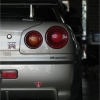1995 R33 Gtr - Twin Bovs Going Off In Sequence And Different Readings On The Two Boost Gauges
Announcements
-
Similar Content
-
Latest Posts
-
Sometimes you need to pay good money to get quality work done.
-
I found they are significantly more expensive than other workshops (this is when I went to ask about a tune), heard they are good though.
-
On the compressor side it looks like the best, if your head setup will support doing 100-110lb/min at 30psi-ish boost. The G45-1350 compressor looks ideally better if you need closer to 40psi for it, given both the G40 1150 and G42 1200 look like they'll be around the 100lb/min mark at 35psi and dropping from there. Bear in mind the turbine sides are all different between those three turbos, so that COULD be an influencing factor for how they all perform in the real world as well. Not sure if you've made a conscious decision to only look at Garrett or not, but at least on paper the XRE7169S matches or beats those other three at everything from 30psi up and just going from wheel size alone likely to be at least as responsive as the G40 1150 and seem to behave closer to G42s in terms of turbine flow.










Recommended Posts
Create an account or sign in to comment
You need to be a member in order to leave a comment
Create an account
Sign up for a new account in our community. It's easy!
Register a new accountSign in
Already have an account? Sign in here.
Sign In Now